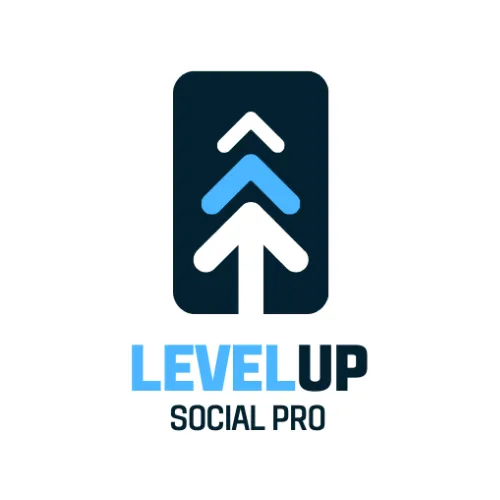BLOGS
Discover Online and Social media Marketing
strategies and tips in our blog.

Mastering Social Media: Tailored Strategies for Each Platform
Mastering Social Media: Tailored Strategies for Each Platform
In today's digital age, simply reposting the same content across all social media platforms is a recipe for failure. Each platform has its own unique audience and best practices, and understanding these nuances can be the key to your business's success. In this blog, we'll break down the major social media platforms—Instagram, Facebook, TikTok, and YouTube—highlighting how to use them effectively, common mistakes to avoid, and examples of businesses that are doing it right.
Instagram: Connecting on a Personal Level
Instagram is all about building personal connections. It's where people go to know, like, and trust you. The biggest mistake many business owners make is treating Instagram like an MLS feed, bombarding followers with listings or static images. Your Instagram should showcase your personality, behind-the-scenes glimpses, and a blend of informative content.
Example: Utah Real Estate Page Utah Real Estate excels by mixing behind-the-scenes content with real estate information, creating a relatable and informative profile.
Tips for Instagram:
Show your personality: Share behind-the-scenes content and personal stories.
How to do it: Post photos and videos of your daily life, team members, or events. Share stories that highlight your personality and humanize your brand.
Mix content types: Combine photos, videos, and stories to keep your feed dynamic.
How to do it: Plan a content calendar that includes a variety of post types. For example, post photos on Mondays, videos on Wednesdays, and stories throughout the week.
Engage with followers: Respond to comments and direct messages to build relationships.
How to do it: Set aside time each day to reply to comments and messages. Ask questions in your captions to encourage engagement.
What Not to Do on Instagram:
Post only listings or static images: This makes your feed look like an MLS and doesn't engage your audience.
Avoid this by: Ensuring your content is varied and includes personal, engaging posts.
Ignore follower interactions: Not responding to comments or messages can make your audience feel neglected.
Avoid this by: Regularly engaging with your followers and showing appreciation for their interactions.
Actionable Steps:
Review your last 10 posts: Ensure there's a mix of personal and professional content.
How to do it: Look at your Instagram feed and note the balance of different types of posts. Adjust your future posts to include more variety if needed.
Plan a behind-the-scenes post for this week: Show the human side of your business.
How to do it: Take a photo or video of your team at work, a sneak peek of a new project, or a day-in-the-life segment.
Engage with 10 new followers: Comment on their posts or reply to their stories.
How to do it: Visit the profiles of recent followers, like their posts, leave thoughtful comments, and reply to any stories they have posted.
Facebook: Conversations and Communities
Facebook thrives on conversations and group interactions. It's not about spamming listings into groups but about starting meaningful discussions. Find groups relevant to your niche and engage with them genuinely. Respond to comments and foster ongoing dialogues to maximize your reach.
Example: Successful Facebook Interactions Look at how engaging conversations on Facebook can explode your reach. It's all about thoughtful content and genuine interactions.
Tips for Facebook:
Join relevant groups: Find groups that align with your business and join the conversation.
How to do it: Use Facebook's search function to find groups related to your industry or interests. Request to join, and once accepted, introduce yourself and participate in discussions.
Start discussions: Post questions or topics that encourage group members to engage.
How to do it: Think of relevant, open-ended questions that will prompt responses. For example, "What is your biggest challenge in [your industry] right now?"
Be responsive: Reply to comments and messages promptly to keep the conversation going.
How to do it: Set notifications for comments and messages. Allocate specific times during the day to check and respond to them.
What Not to Do on Facebook:
Spam listings into groups: This can be seen as lazy and annoying.
Avoid this by: Focusing on creating thoughtful content and engaging in conversations.
Overlook the importance of conversations: Failing to start or engage in discussions misses the platform's primary function.
Avoid this by: Prioritizing conversation starters and group interactions.
Actionable Steps:
Join three new Facebook groups: Relevant to your niche.
How to do it: Search for groups, read their descriptions, and request to join. Once accepted, introduce yourself and contribute to ongoing discussions.
Post a question or discussion topic in each group this week:
How to do it: Draft engaging questions or topics. For example, "What new marketing strategies have you tried this year?" or "How do you stay motivated in your business?"
Set aside 15 minutes daily to respond to comments and engage with group members:
How to do it: Schedule this time in your calendar. Use it to reply to comments, react to posts, and start new conversations.
TikTok: Quick, Entertaining Content
TikTok is a platform for quick, punchy, and entertaining content. It demands a full commitment to stay relevant. Following trends and creating timely content is crucial. If you can't hook your audience in the first second, you risk losing them.
Example: Gotu Real Estate Gotu Real Estate demonstrates how a well-executed TikTok strategy can attract a younger audience and build a significant following.
Tips for TikTok:
Follow trends: Keep up with popular trends and incorporate them into your content.
How to do it: Spend time on TikTok daily to see what’s trending. Use popular sounds, hashtags, and formats in your videos.
Be concise: Capture attention quickly with short, engaging videos.
How to do it: Plan your video to grab attention within the first second. Use a strong hook and keep the content direct and engaging.
Use hooks: Start your videos with a strong hook to draw viewers in immediately.
How to do it: Begin with an intriguing question, a surprising fact, or a visually striking element.
What Not to Do on TikTok:
Half-hearted efforts: Doing TikTok casually without a full commitment will not yield results.
Avoid this by: Committing fully to learning and engaging with the platform.
Ignoring trends: Missing out on trending content can make your posts less relevant.
Avoid this by: Staying updated with current trends and incorporating them into your content strategy.
Actionable Steps:
Spend 30 minutes researching current TikTok trends: Note which ones fit your brand.
How to do it: Browse the For You page, follow popular creators in your niche, and take note of trending hashtags and sounds.
Plan and film one TikTok video this week using a trending hashtag or sound:
How to do it: Choose a trend that aligns with your brand, script a short video, and film it. Use editing tools to make it engaging.
Monitor the performance of your TikTok videos and adjust your strategy based on engagement:
How to do it: Check analytics for views, likes, comments, and shares. Identify what works and refine your content strategy accordingly.
YouTube: Deep, Educational Content
YouTube is a powerhouse for educational, long-form content. It's an excellent platform for generating new leads through search-based queries. Avoid the mistake of posting generic videos; instead, provide detailed, in-depth content that people are searching for.
Example: Mike the Agent Mike’s YouTube channel is a goldmine of valuable information, demonstrating the power of going deep into topics and creating highly searchable content.
Tips for YouTube:
Focus on education: Create content that teaches viewers something new.
How to do it: Identify common questions or problems in your industry and create videos that address them in detail.
Use SEO: Optimize your video titles, descriptions, and tags for search.
How to do it: Use tools like Google Keyword Planner or TubeBuddy to find relevant keywords. Include these keywords in your video title, description, and tags.
Go deep: Provide detailed, thorough information in your videos.
How to do it: Plan your content to cover topics comprehensively. Use examples, data, and visuals to illustrate your points.
What Not to Do on YouTube:
Post unpersonalized listing videos: These lack engagement and don't showcase your brand.
Avoid this by: Adding personal intros, outros, and call-to-actions to your videos.
Create shallow content: Skimming over topics doesn't provide value to your audience.
Avoid this by: Going in-depth with your content, offering detailed information and examples.
Actionable Steps:
Identify three topics your audience is searching for and create detailed videos on them:
How to do it: Use keyword research tools to find popular search terms. Plan and script videos that address these topics in-depth.
Optimize your next video title and description using relevant keywords:
How to do it: Include primary and secondary keywords naturally in the title and description. Add tags related to the topic.
Plan to include call-to-actions in your videos to engage viewers further:
How to do it: Encourage viewers to like, comment, and subscribe. Direct them to additional resources or ask questions to prompt engagement.
Key Takeaways
Tailor your content to fit each platform's unique characteristics and audience.
Focus on a few platforms and excel in them rather than spreading your efforts too thin.
Continuously learn and adapt to platform trends and algorithms.
General Tips:
Consistency is key: Regular posting helps maintain engagement and grow your audience.
How to do it: Create a content calendar to plan and schedule posts. Stick to a consistent posting schedule.
Quality over quantity: Focus on creating high-quality content rather than posting frequently.
How to do it: Prioritize content that provides value to your audience. Spend more time on fewer, higher-quality posts.
Engage authentically: Build genuine relationships with your audience through meaningful interactions.
How to do it: Be responsive to comments and messages. Show genuine interest in your audience's feedback and needs.
Actionable Steps:
Create a content calendar to plan and schedule your posts across all platforms:
How to do it: Use tools like Google Calendar, Trello, or a dedicated content calendar app. Plan content themes, post types, and posting times.
Dedicate time each week to engage with your audience and respond to comments:
How to do it: Block out specific times in your schedule for engagement activities. Prioritize responding to comments, messages, and participating in discussions.
Analyze your social media performance monthly to identify what's working and adjust your strategy accordingly:
How to do it: Use analytics tools provided by each platform to track engagement, reach, and other key metrics. Review this data monthly to see which content types and strategies are most effective and adjust your plans accordingly.
By understanding and leveraging the strengths of each social media platform, you can create a robust and effective digital presence that engages your audience and drives your business forward. Stay tuned for more in-depth dives into each platform, and don’t forget to sign up for our upcoming webinar on building successful webinar funnels.
Engage with us: If you liked this content be sure to subscribe to our blog for more social media marketing tips, tricks and hacks. See you in the next post!
Stay Ahead in the Digital Arena
Join our Newsletter
Subscribe to our newsletter for the latest digital marketing insights, tips, and exclusive content from Level Up Social Pro.
Follow Us
Copyright © 2024. All rights reserved. Level Up Social Pro
Copyright © 2024 – Level Up Social Pro

